Cloud computing is the on-demand availability of computer system resources, especially data storage (cloud storage) and computing power, without direct active management by the user. Large clouds often have functions distributed over multiple locations, each of which is a data center. Cloud computing relies on sharing of resources to achieve coherence and typically uses a pay-as-you-go model, which can help in reducing capital expenses but may also lead to unexpected operating expenses for users.
Definition
The United States National Institute of Standards and Technology’s definition of cloud computing identifies “five essential characteristics”.
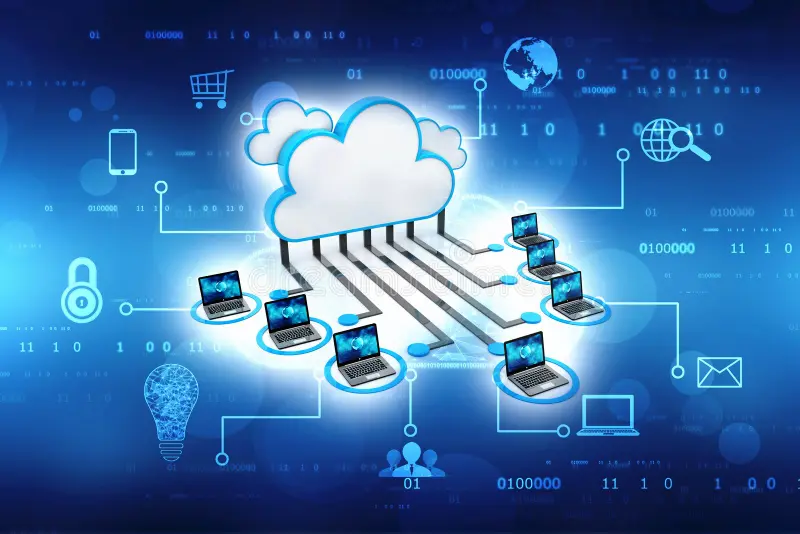

- On-demand self-service A consumer can unilaterally provision computing capabilities, such as server time and network storage, as needed automatically without requiring human interaction with each service provider.
- Broad network access Capabilities are available over the network and accessed through standard mechanisms that promote use by heterogeneous thin or thick client platforms (e.g., mobile phones, tablets, laptops, and workstations).
- Resource pooling The provider’s computing resources are pooled to serve multiple consumers using a multi-tenant model, with different physical and virtual resources dynamically assigned and reassigned according to consumer demand.
- Rapid elasticity Capabilities can be elastically provisioned and released, in some cases automatically, to scale rapidly outward and inward commensurate with demand. To the consumer, the capabilities available for provisioning often appear unlimited and can be appropriated in any quantity at any time.
- Measured service Cloud systems automatically control and optimize resource use by leveraging a metering capability at some level of abstraction appropriate to the type of service (e.g., storage, processing, bandwidth, and active user accounts). Resource usage can be monitored, controlled, and reported, providing transparency for both the provider and consumer of the utilized service.
Value proposition
Advocates of public and hybrid clouds claim that cloud computing allows companies to avoid or minimize up-front IT infrastructure costs. Proponents also claim that cloud computing allows enterprises to get their applications up and running faster, with improved manageability and less maintenance, and that it enables IT teams to more rapidly adjust resources to meet fluctuating and unpredictable demand, providing burst computing capability: high computing power at certain periods of peak demand. Additional value propositions of cloud computing include:
 Cost reductions
A public-cloud delivery model converts capital expenditures (e.g., buying servers) to operational expenditure. This purportedly lowers barriers to entry, as infrastructure is typically provided by a third party and need not be purchased for one-time or infrequent intensive computing tasks. Pricing on a utility computing basis is “fine-grained”, with usage-based billing options. As well, less in-house IT skills are required for implementation of projects that use cloud computing. The e-FISCAL project’s state-of-the-art repository contains several articles looking into cost aspects in more detail, most of them concluding that costs savings depend on the type of activities supported and the type of infrastructure available in-house.
Cost reductions
A public-cloud delivery model converts capital expenditures (e.g., buying servers) to operational expenditure. This purportedly lowers barriers to entry, as infrastructure is typically provided by a third party and need not be purchased for one-time or infrequent intensive computing tasks. Pricing on a utility computing basis is “fine-grained”, with usage-based billing options. As well, less in-house IT skills are required for implementation of projects that use cloud computing. The e-FISCAL project’s state-of-the-art repository contains several articles looking into cost aspects in more detail, most of them concluding that costs savings depend on the type of activities supported and the type of infrastructure available in-house.
 Device independence
Device and location independence enable users to access systems using a web browser regardless of their location or what device they use (e.g., PC, mobile phone). As infrastructure is off-site (typically provided by a third-party) and accessed via the Internet, users can connect to it from anywhere.
Maintenance
Maintenance of cloud environment is easier because the data is hosted on an outside server maintained by a provider without the need to invest in data center hardware. IT maintenance of cloud computing is managed and updated by the cloud provider’s IT maintenance team which reduces cloud computing costs compared with on-premises data centers.
Device independence
Device and location independence enable users to access systems using a web browser regardless of their location or what device they use (e.g., PC, mobile phone). As infrastructure is off-site (typically provided by a third-party) and accessed via the Internet, users can connect to it from anywhere.
Maintenance
Maintenance of cloud environment is easier because the data is hosted on an outside server maintained by a provider without the need to invest in data center hardware. IT maintenance of cloud computing is managed and updated by the cloud provider’s IT maintenance team which reduces cloud computing costs compared with on-premises data centers.
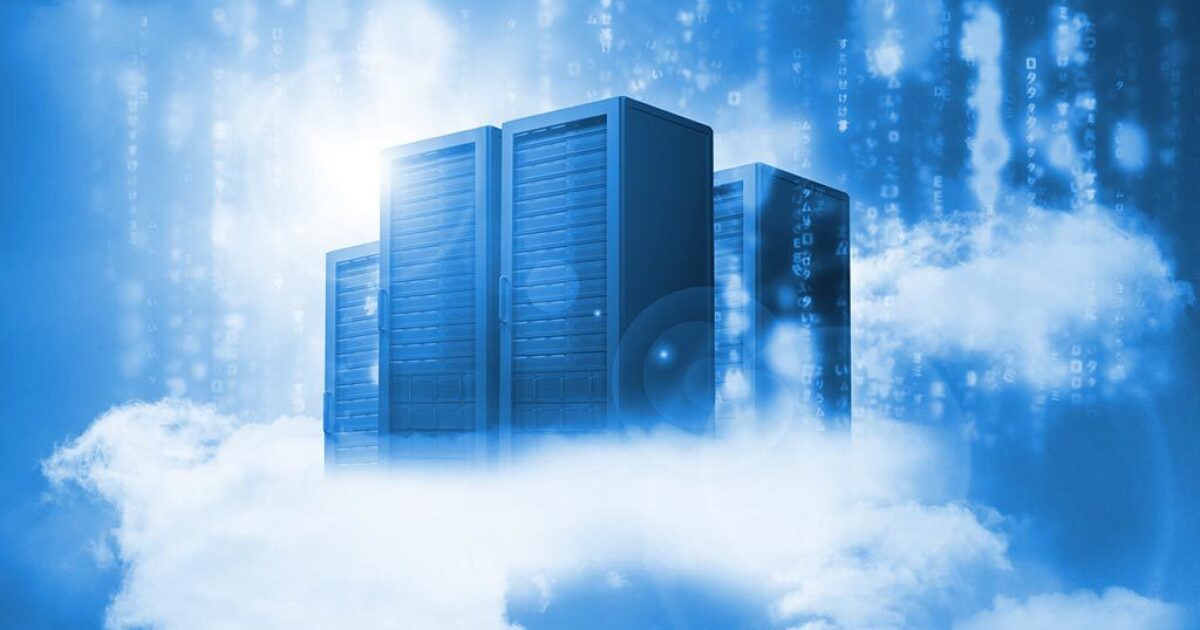 Multitenancy
Multitenancy enables sharing of resources and costs across a large pool of users thus allowing for:
Multitenancy
Multitenancy enables sharing of resources and costs across a large pool of users thus allowing for:
 Cost reductions
A public-cloud delivery model converts capital expenditures (e.g., buying servers) to operational expenditure. This purportedly lowers barriers to entry, as infrastructure is typically provided by a third party and need not be purchased for one-time or infrequent intensive computing tasks. Pricing on a utility computing basis is “fine-grained”, with usage-based billing options. As well, less in-house IT skills are required for implementation of projects that use cloud computing. The e-FISCAL project’s state-of-the-art repository contains several articles looking into cost aspects in more detail, most of them concluding that costs savings depend on the type of activities supported and the type of infrastructure available in-house.
Cost reductions
A public-cloud delivery model converts capital expenditures (e.g., buying servers) to operational expenditure. This purportedly lowers barriers to entry, as infrastructure is typically provided by a third party and need not be purchased for one-time or infrequent intensive computing tasks. Pricing on a utility computing basis is “fine-grained”, with usage-based billing options. As well, less in-house IT skills are required for implementation of projects that use cloud computing. The e-FISCAL project’s state-of-the-art repository contains several articles looking into cost aspects in more detail, most of them concluding that costs savings depend on the type of activities supported and the type of infrastructure available in-house.
 Device independence
Device and location independence enable users to access systems using a web browser regardless of their location or what device they use (e.g., PC, mobile phone). As infrastructure is off-site (typically provided by a third-party) and accessed via the Internet, users can connect to it from anywhere.
Maintenance
Maintenance of cloud environment is easier because the data is hosted on an outside server maintained by a provider without the need to invest in data center hardware. IT maintenance of cloud computing is managed and updated by the cloud provider’s IT maintenance team which reduces cloud computing costs compared with on-premises data centers.
Device independence
Device and location independence enable users to access systems using a web browser regardless of their location or what device they use (e.g., PC, mobile phone). As infrastructure is off-site (typically provided by a third-party) and accessed via the Internet, users can connect to it from anywhere.
Maintenance
Maintenance of cloud environment is easier because the data is hosted on an outside server maintained by a provider without the need to invest in data center hardware. IT maintenance of cloud computing is managed and updated by the cloud provider’s IT maintenance team which reduces cloud computing costs compared with on-premises data centers.
 Multitenancy
Multitenancy enables sharing of resources and costs across a large pool of users thus allowing for:
Multitenancy
Multitenancy enables sharing of resources and costs across a large pool of users thus allowing for:
- centralization of infrastructure in locations with lower costs (such as real estate, electricity, etc.)
- peak-load capacity increases (users need not engineer and pay for the resources and equipment to meet their highest possible load-levels)
- utilization and efficiency improvements for systems that are often only 10–20% utilized.






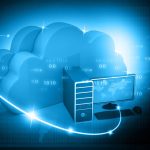


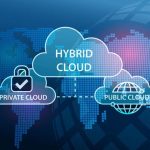


Architecture
 Cloud architecture, the systems architecture of the software systems involved in the delivery of cloud computing, typically involves multiple cloud components communicating with each other over a loose coupling mechanism such as a messaging queue. Elastic provision implies intelligence in the use of tight or loose coupling as applied to mechanisms such as these and others.
Cloud engineering
Cloud engineering is the application of engineering disciplines of cloud computing. It brings a systematic approach to the high-level concerns of commercialization, standardization and governance in conceiving, developing, operating and maintaining cloud computing systems. It is a multidisciplinary method encompassing contributions from diverse areas such as systems, software, web, performance, information technology engineering, security, platform, risk, and quality engineering.
Cloud architecture, the systems architecture of the software systems involved in the delivery of cloud computing, typically involves multiple cloud components communicating with each other over a loose coupling mechanism such as a messaging queue. Elastic provision implies intelligence in the use of tight or loose coupling as applied to mechanisms such as these and others.
Cloud engineering
Cloud engineering is the application of engineering disciplines of cloud computing. It brings a systematic approach to the high-level concerns of commercialization, standardization and governance in conceiving, developing, operating and maintaining cloud computing systems. It is a multidisciplinary method encompassing contributions from diverse areas such as systems, software, web, performance, information technology engineering, security, platform, risk, and quality engineering. Deployment models
Private
 Private cloud is cloud infrastructure operated solely for a single organization, whether managed internally or by a third party, and hosted either internally or externally. Undertaking a private cloud project requires significant engagement to virtualize the business environment, and requires the organization to reevaluate decisions about existing resources. It can improve business, but every step in the project raises security issues that must be addressed to prevent serious vulnerabilities.
Self-run data centers are generally capital intensive. They have a significant physical footprint, requiring allocations of space, hardware, and environmental controls. These assets have to be refreshed periodically, resulting in additional capital expenditures. They have attracted criticism because users “still have to buy, build, and manage them” and thus do not benefit from less hands-on management, essentially “[lacking] the economic model that makes cloud computing such an intriguing concept”.
Private cloud is cloud infrastructure operated solely for a single organization, whether managed internally or by a third party, and hosted either internally or externally. Undertaking a private cloud project requires significant engagement to virtualize the business environment, and requires the organization to reevaluate decisions about existing resources. It can improve business, but every step in the project raises security issues that must be addressed to prevent serious vulnerabilities.
Self-run data centers are generally capital intensive. They have a significant physical footprint, requiring allocations of space, hardware, and environmental controls. These assets have to be refreshed periodically, resulting in additional capital expenditures. They have attracted criticism because users “still have to buy, build, and manage them” and thus do not benefit from less hands-on management, essentially “[lacking] the economic model that makes cloud computing such an intriguing concept”. Public
 Cloud services are considered “public” when they are delivered over the public Internet, and they may be offered as a paid subscription, or free of charge. Architecturally, there are few differences between public- and private-cloud services, but security concerns increase substantially when services (applications, storage, and other resources) are shared by multiple customers. Most public-cloud providers offer direct-connection services that allow customers to securely link their legacy data centers to their cloud-resident applications.
Several factors like the functionality of the solutions, cost, integrational and organizational aspects as well as safety & security are influencing the decision of enterprises and organizations to choose a public cloud or on-premises solution.
Cloud services are considered “public” when they are delivered over the public Internet, and they may be offered as a paid subscription, or free of charge. Architecturally, there are few differences between public- and private-cloud services, but security concerns increase substantially when services (applications, storage, and other resources) are shared by multiple customers. Most public-cloud providers offer direct-connection services that allow customers to securely link their legacy data centers to their cloud-resident applications.
Several factors like the functionality of the solutions, cost, integrational and organizational aspects as well as safety & security are influencing the decision of enterprises and organizations to choose a public cloud or on-premises solution. Hybrid
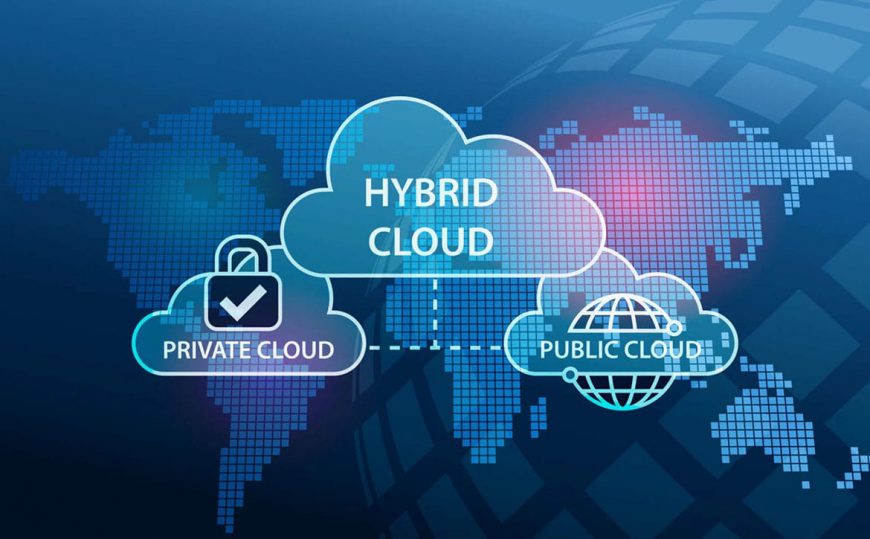 Hybrid cloud is a composition of a public cloud and a private environment, such as a private cloud or on-premises resources, that remain distinct entities but are bound together, offering the benefits of multiple deployment models. Hybrid cloud can also mean the ability to connect collocation, managed and/or dedicated services with cloud resources. Gartner defines a hybrid cloud service as a cloud computing service that is composed of some combination of private, public and community cloud services, from different service providers.
A hybrid cloud service crosses isolation and provider boundaries so that it cannot be simply put in one category of private, public, or community cloud service. It allows one to extend either the capacity or the capability of a cloud service, by aggregation, integration or customization with another cloud service.
Hybrid cloud is a composition of a public cloud and a private environment, such as a private cloud or on-premises resources, that remain distinct entities but are bound together, offering the benefits of multiple deployment models. Hybrid cloud can also mean the ability to connect collocation, managed and/or dedicated services with cloud resources. Gartner defines a hybrid cloud service as a cloud computing service that is composed of some combination of private, public and community cloud services, from different service providers.
A hybrid cloud service crosses isolation and provider boundaries so that it cannot be simply put in one category of private, public, or community cloud service. It allows one to extend either the capacity or the capability of a cloud service, by aggregation, integration or customization with another cloud service.
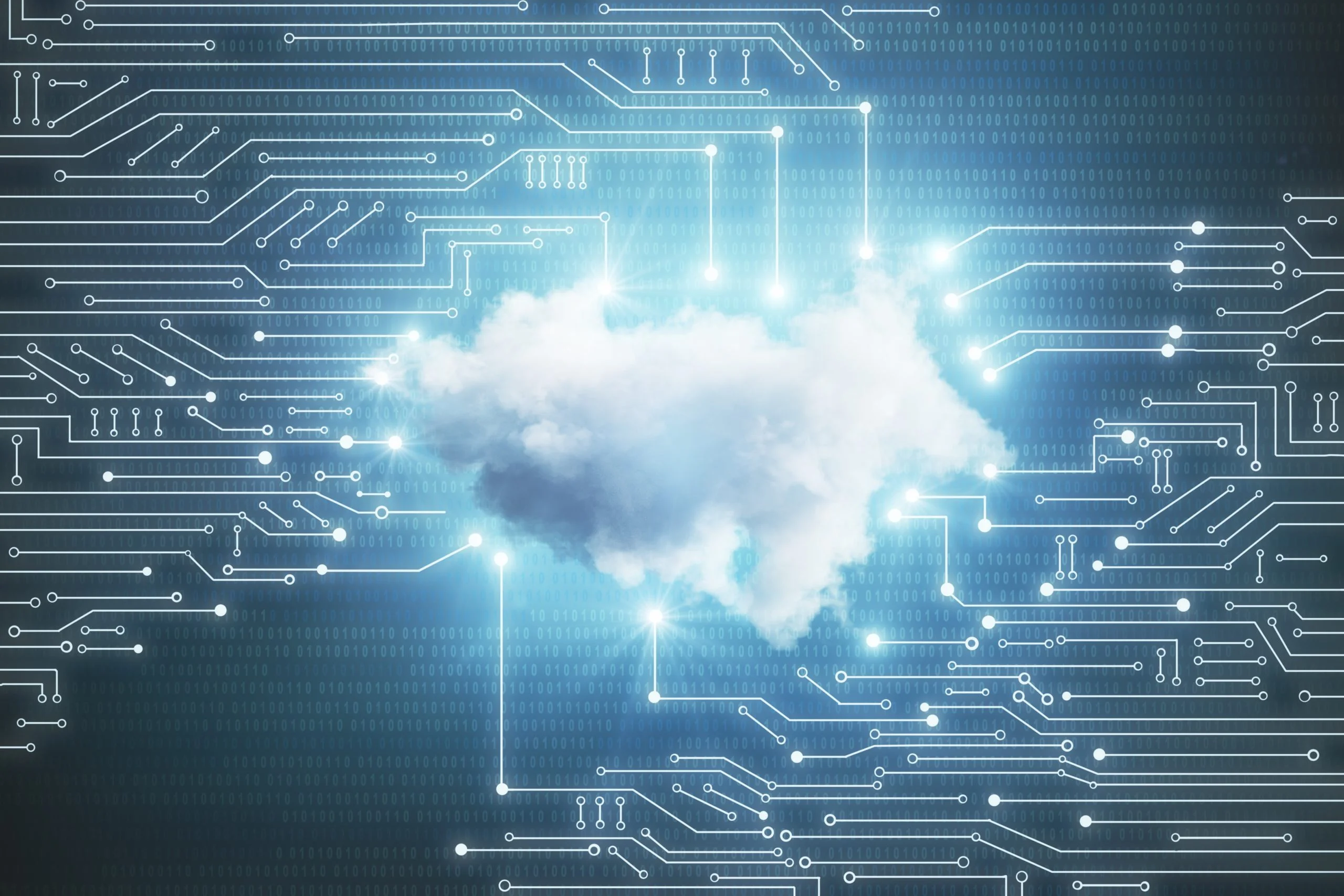 Varied use cases for hybrid cloud composition exist. For example, an organization may store sensitive client data in house on a private cloud application, but interconnect that application to a business intelligence application provided on a public cloud as a software service. This example of hybrid cloud extends the capabilities of the enterprise to deliver a specific business service through the addition of externally available public cloud services. Hybrid cloud adoption depends on a number of factors such as data security and compliance requirements, level of control needed over data, and the applications an organization uses.
Varied use cases for hybrid cloud composition exist. For example, an organization may store sensitive client data in house on a private cloud application, but interconnect that application to a business intelligence application provided on a public cloud as a software service. This example of hybrid cloud extends the capabilities of the enterprise to deliver a specific business service through the addition of externally available public cloud services. Hybrid cloud adoption depends on a number of factors such as data security and compliance requirements, level of control needed over data, and the applications an organization uses.
 Another example of hybrid cloud is one where IT organizations use public cloud computing resources to meet temporary capacity needs that can not be met by the private cloud. This capability enables hybrid clouds to employ cloud bursting for scaling across clouds. Cloud bursting is an application deployment model in which an application runs in a private cloud or data center and “bursts” to a public cloud when the demand for computing capacity increases.
A primary advantage of cloud bursting and a hybrid cloud model is that an organization pays for extra compute resources only when they are needed. Cloud bursting enables data centers to create an in-house IT infrastructure that supports average workloads, and use cloud resources from public or private clouds, during spikes in processing demands.
Another example of hybrid cloud is one where IT organizations use public cloud computing resources to meet temporary capacity needs that can not be met by the private cloud. This capability enables hybrid clouds to employ cloud bursting for scaling across clouds. Cloud bursting is an application deployment model in which an application runs in a private cloud or data center and “bursts” to a public cloud when the demand for computing capacity increases.
A primary advantage of cloud bursting and a hybrid cloud model is that an organization pays for extra compute resources only when they are needed. Cloud bursting enables data centers to create an in-house IT infrastructure that supports average workloads, and use cloud resources from public or private clouds, during spikes in processing demands. Cloud Computing
globally 2023 -2030
($ Billion) cloud infrastructure spending
0
($ Billion) Cloud Computing Market
0
Service models
The service-oriented architecture (SOA) promotes the idea of “Everything as a Service” (EaaS or XaaS, or simply aAsS). This concept is operationalized in cloud computing through several service models as defined by the National Institute of Standards and Technology (NIST). The three standard service models are Infrastructure as a Service (IaaS), Platform as a Service (PaaS), and Software as a Service (SaaS).
They are commonly depicted as layers in a stack, providing different levels of abstraction. However, these layers are not necessarily interdependent. For instance, SaaS can be delivered on bare metal, bypassing PaaS and IaaS, and a program can run directly on IaaS without being packaged as SaaS.
Infrastructure as a service (IaaS)
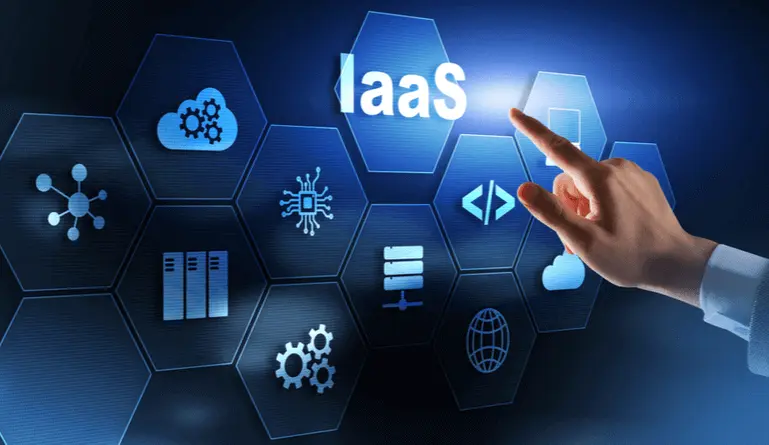 “Infrastructure as a service” (IaaS) refers to online services that provide high-level APIs used to abstract various low-level details of underlying network infrastructure like physical computing resources, location, data partitioning, scaling, security, backup, etc. A hypervisor runs the virtual machines as guests. Pools of hypervisors within the cloud operational system can support large numbers of virtual machines and the ability to scale services up and down according to customers’ varying requirements.
Linux containers run in isolated partitions of a single Linux kernel running directly on the physical hardware. Linux cgroups and namespaces are the underlying Linux kernel technologies used to isolate, secure and manage the containers. The use of containers offers higher performance than virtualization because there is no hypervisor overhead. IaaS clouds often offer additional resources such as a virtual-machine disk-image library, raw block storage, file or object storage, firewalls, load balancers, IP addresses, virtual local area networks (VLANs), and software bundles.
“Infrastructure as a service” (IaaS) refers to online services that provide high-level APIs used to abstract various low-level details of underlying network infrastructure like physical computing resources, location, data partitioning, scaling, security, backup, etc. A hypervisor runs the virtual machines as guests. Pools of hypervisors within the cloud operational system can support large numbers of virtual machines and the ability to scale services up and down according to customers’ varying requirements.
Linux containers run in isolated partitions of a single Linux kernel running directly on the physical hardware. Linux cgroups and namespaces are the underlying Linux kernel technologies used to isolate, secure and manage the containers. The use of containers offers higher performance than virtualization because there is no hypervisor overhead. IaaS clouds often offer additional resources such as a virtual-machine disk-image library, raw block storage, file or object storage, firewalls, load balancers, IP addresses, virtual local area networks (VLANs), and software bundles.
 The NIST’s definition of cloud computing describes IaaS as “where the consumer is able to deploy and run arbitrary software, which can include operating systems and applications. The consumer does not manage or control the underlying cloud infrastructure but has control over operating systems, storage, and deployed applications; and possibly limited control of select networking components (e.g., host firewalls).”
IaaS-cloud providers supply these resources on-demand from their large pools of equipment installed in data centers. For wide-area connectivity, customers can use either the Internet or carrier clouds (dedicated virtual private networks). To deploy their applications, cloud users install operating-system images and their application software on the cloud infrastructure. In this model, the cloud user patches and maintains the operating systems and the application software. Cloud providers typically bill IaaS services on a utility computing basis: cost reflects the number of resources allocated and consumed.
The NIST’s definition of cloud computing describes IaaS as “where the consumer is able to deploy and run arbitrary software, which can include operating systems and applications. The consumer does not manage or control the underlying cloud infrastructure but has control over operating systems, storage, and deployed applications; and possibly limited control of select networking components (e.g., host firewalls).”
IaaS-cloud providers supply these resources on-demand from their large pools of equipment installed in data centers. For wide-area connectivity, customers can use either the Internet or carrier clouds (dedicated virtual private networks). To deploy their applications, cloud users install operating-system images and their application software on the cloud infrastructure. In this model, the cloud user patches and maintains the operating systems and the application software. Cloud providers typically bill IaaS services on a utility computing basis: cost reflects the number of resources allocated and consumed.
Platform as a service (PaaS)
 The NIST’s definition of cloud computing defines Platform as a Service as:
The capability provided to the consumer is to deploy onto the cloud infrastructure consumer-created or acquired applications created using programming languages, libraries, services, and tools supported by the provider. The consumer does not manage or control the underlying cloud infrastructure including network, servers, operating systems, or storage, but has control over the deployed applications and possibly configuration settings for the application-hosting environment.
PaaS vendors offer a development environment to application developers. The provider typically develops toolkit and standards for development and channels for distribution and payment. In the PaaS models, cloud providers deliver a computing platform, typically including an operating system, programming-language execution environment, database, and the web server. Application developers develop and run their software on a cloud platform instead of directly buying and managing the underlying hardware and software layers. With some PaaS, the underlying computer and storage resources scale automatically to match application demand so that the cloud user does not have to allocate resources manually.
The NIST’s definition of cloud computing defines Platform as a Service as:
The capability provided to the consumer is to deploy onto the cloud infrastructure consumer-created or acquired applications created using programming languages, libraries, services, and tools supported by the provider. The consumer does not manage or control the underlying cloud infrastructure including network, servers, operating systems, or storage, but has control over the deployed applications and possibly configuration settings for the application-hosting environment.
PaaS vendors offer a development environment to application developers. The provider typically develops toolkit and standards for development and channels for distribution and payment. In the PaaS models, cloud providers deliver a computing platform, typically including an operating system, programming-language execution environment, database, and the web server. Application developers develop and run their software on a cloud platform instead of directly buying and managing the underlying hardware and software layers. With some PaaS, the underlying computer and storage resources scale automatically to match application demand so that the cloud user does not have to allocate resources manually.
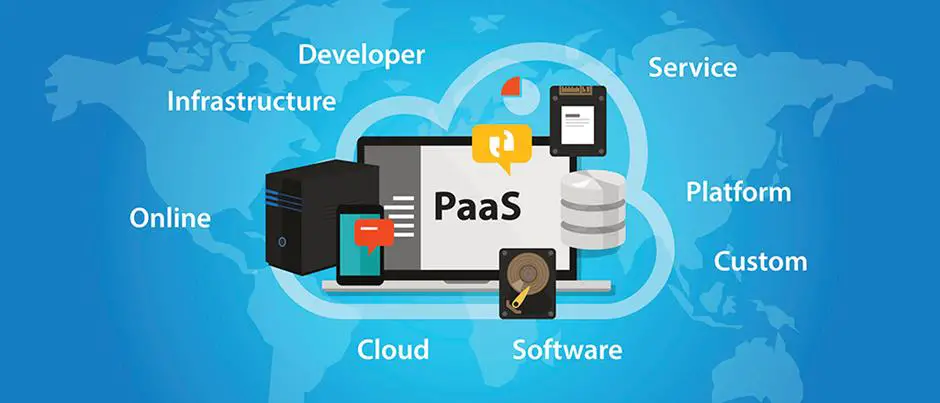 Some integration and data management providers also use specialized applications of PaaS as delivery models for data. Examples include iPaaS (Integration Platform as a Service) and dPaaS (Data Platform as a Service).
iPaaS enables customers to develop, execute and govern integration flows. Under the iPaaS integration model, customers drive the development and deployment of integrations without installing or managing any hardware or middleware. dPaaS delivers integration—and data-management—products as a fully managed service. Under the dPaaS model, the PaaS provider, not the customer, manages the development and execution of programs by building data applications for the customer. dPaaS users access data through data-visualization tools.
Some integration and data management providers also use specialized applications of PaaS as delivery models for data. Examples include iPaaS (Integration Platform as a Service) and dPaaS (Data Platform as a Service).
iPaaS enables customers to develop, execute and govern integration flows. Under the iPaaS integration model, customers drive the development and deployment of integrations without installing or managing any hardware or middleware. dPaaS delivers integration—and data-management—products as a fully managed service. Under the dPaaS model, the PaaS provider, not the customer, manages the development and execution of programs by building data applications for the customer. dPaaS users access data through data-visualization tools. Software as a service (SaaS)
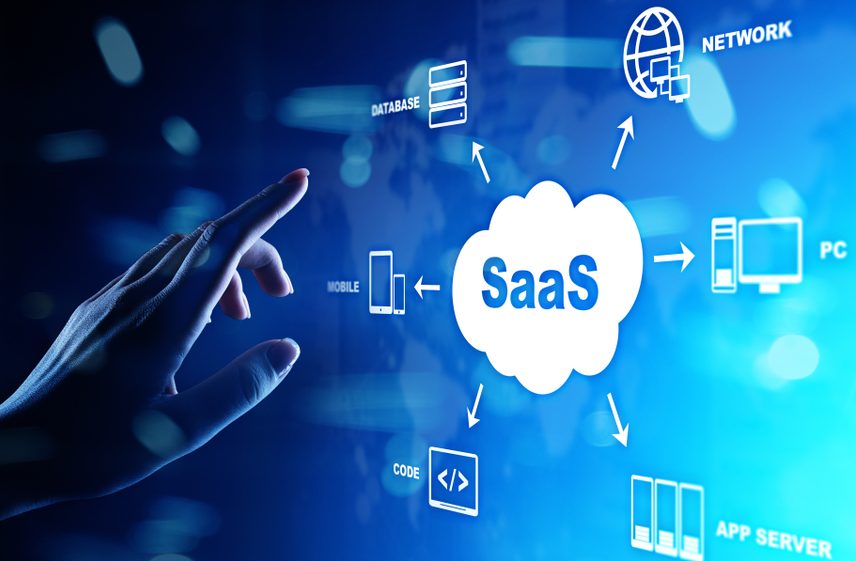 The NIST’s definition of cloud computing defines Software as a Service as:
The capability provided to the consumer is to use the provider’s applications running on a cloud infrastructure. The applications are accessible from various client devices through either a thin client interface, such as a web browser (e.g., web-based email), or a program interface. The consumer does not manage or control the underlying cloud infrastructure including network, servers, operating systems, storage, or even individual application capabilities, with the possible exception of limited user-specific application configuration settings.
In the software as a service (SaaS) model, users gain access to application software and databases. Cloud providers manage the infrastructure and platforms that run the applications. SaaS is sometimes referred to as “on-demand software” and is usually priced on a pay-per-use basis or using a subscription fee. In the SaaS model, cloud providers install and operate application software in the cloud and cloud users access the software from cloud clients. Cloud users do not manage the cloud infrastructure and platform where the application runs. This eliminates the need to install and run the application on the cloud user’s own computers, which simplifies maintenance and support. Cloud applications differ from other applications in their scalability—which can be achieved by cloning tasks onto multiple virtual machines at run-time to meet changing work demand. Load balancers distribute the work over the set of virtual machines. This process is transparent to the cloud user, who sees only a single access-point. To accommodate a large number of cloud users, cloud applications can be multitenant, meaning that any machine may serve more than one cloud-user organization.
The NIST’s definition of cloud computing defines Software as a Service as:
The capability provided to the consumer is to use the provider’s applications running on a cloud infrastructure. The applications are accessible from various client devices through either a thin client interface, such as a web browser (e.g., web-based email), or a program interface. The consumer does not manage or control the underlying cloud infrastructure including network, servers, operating systems, storage, or even individual application capabilities, with the possible exception of limited user-specific application configuration settings.
In the software as a service (SaaS) model, users gain access to application software and databases. Cloud providers manage the infrastructure and platforms that run the applications. SaaS is sometimes referred to as “on-demand software” and is usually priced on a pay-per-use basis or using a subscription fee. In the SaaS model, cloud providers install and operate application software in the cloud and cloud users access the software from cloud clients. Cloud users do not manage the cloud infrastructure and platform where the application runs. This eliminates the need to install and run the application on the cloud user’s own computers, which simplifies maintenance and support. Cloud applications differ from other applications in their scalability—which can be achieved by cloning tasks onto multiple virtual machines at run-time to meet changing work demand. Load balancers distribute the work over the set of virtual machines. This process is transparent to the cloud user, who sees only a single access-point. To accommodate a large number of cloud users, cloud applications can be multitenant, meaning that any machine may serve more than one cloud-user organization.
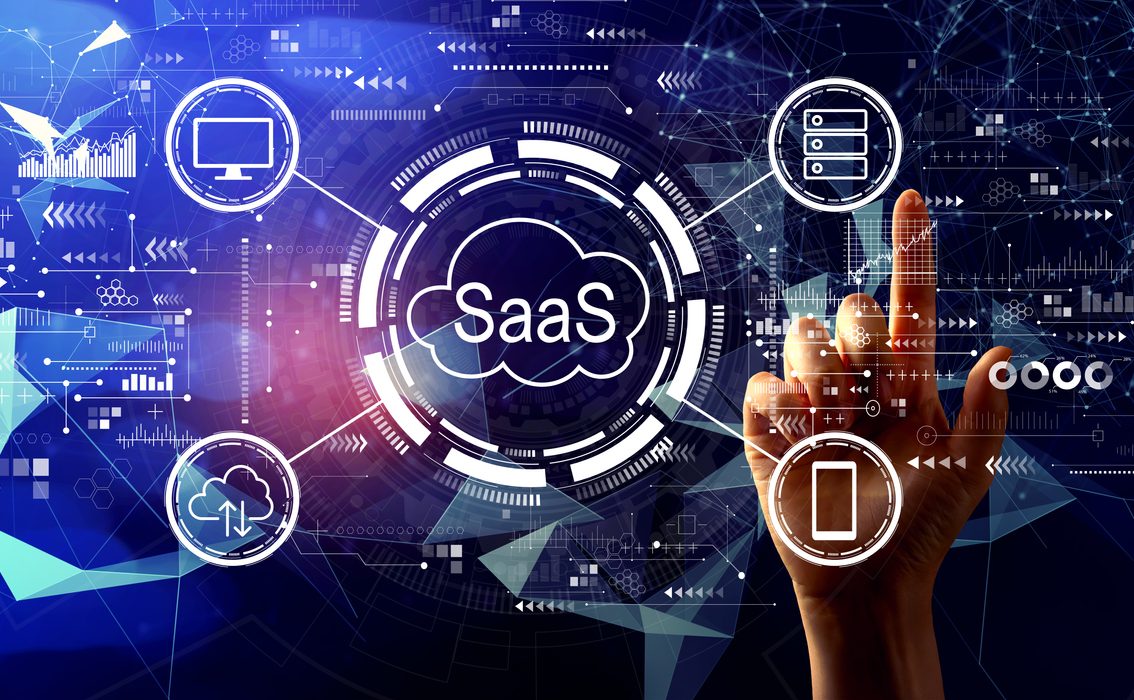 The pricing model for SaaS applications is typically a monthly or yearly flat fee per user, so prices become scalable and adjustable if users are added or removed at any point. It may also be free. Proponents claim that SaaS gives a business the potential to reduce IT operational costs by outsourcing hardware and software maintenance and support to the cloud provider. This enables the business to reallocate IT operations costs away from hardware/software spending and from personnel expenses, towards meeting other goals.
In addition, with applications hosted centrally, updates can be released without the need for users to install new software. One drawback of SaaS comes with storing the users’ data on the cloud provider’s server. As a result, there could be unauthorized access to the data. Examples of applications offered as SaaS are games and productivity software like Google Docs and Office Online. SaaS applications may be integrated with cloud storage or File hosting services, which is the case with Google Docs being integrated with Google Drive, and Office Online being integrated with OneDrive.
The pricing model for SaaS applications is typically a monthly or yearly flat fee per user, so prices become scalable and adjustable if users are added or removed at any point. It may also be free. Proponents claim that SaaS gives a business the potential to reduce IT operational costs by outsourcing hardware and software maintenance and support to the cloud provider. This enables the business to reallocate IT operations costs away from hardware/software spending and from personnel expenses, towards meeting other goals.
In addition, with applications hosted centrally, updates can be released without the need for users to install new software. One drawback of SaaS comes with storing the users’ data on the cloud provider’s server. As a result, there could be unauthorized access to the data. Examples of applications offered as SaaS are games and productivity software like Google Docs and Office Online. SaaS applications may be integrated with cloud storage or File hosting services, which is the case with Google Docs being integrated with Google Drive, and Office Online being integrated with OneDrive. 

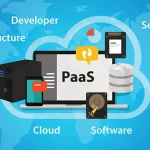
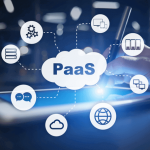

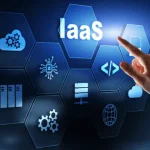
Security and privacy
 Cloud computing poses privacy concerns because the service provider can access the data that is in the cloud at any time. It could accidentally or deliberately alter or delete information. Many cloud providers can share information with third parties if necessary for purposes of law and order without a warrant. That is permitted in their privacy policies, which users must agree to before they start using cloud services.
Solutions to privacy include policy and legislation as well as end-users’ choices for how data is stored. Users can encrypt data that is processed or stored within the cloud to prevent unauthorized access. Identity management systems can also provide practical solutions to privacy concerns in cloud computing. These systems distinguish between authorized and unauthorized users and determine the amount of data that is accessible to each entity. The systems work by creating and describing identities, recording activities, and getting rid of unused identities.
Cloud computing poses privacy concerns because the service provider can access the data that is in the cloud at any time. It could accidentally or deliberately alter or delete information. Many cloud providers can share information with third parties if necessary for purposes of law and order without a warrant. That is permitted in their privacy policies, which users must agree to before they start using cloud services.
Solutions to privacy include policy and legislation as well as end-users’ choices for how data is stored. Users can encrypt data that is processed or stored within the cloud to prevent unauthorized access. Identity management systems can also provide practical solutions to privacy concerns in cloud computing. These systems distinguish between authorized and unauthorized users and determine the amount of data that is accessible to each entity. The systems work by creating and describing identities, recording activities, and getting rid of unused identities.
 According to the Cloud Security Alliance, the top three threats in the cloud are Insecure Interfaces and APIs, Data Loss & Leakage, and Hardware Failure—which accounted for 29%, 25% and 10% of all cloud security outages respectively. Together, these form shared technology vulnerabilities. In a cloud provider platform being shared by different users, there may be a possibility that information belonging to different customers resides on the same data server.
Because data from hundreds or thousands of companies can be stored on large cloud servers, hackers can theoretically gain control of huge stores of information through a single attack—a process he called “hyperjacking”. Some examples of this include the Dropbox security breach, and iCloud 2014 leak. Dropbox had been breached in October 2014, having over 7 million of its users passwords stolen by hackers in an effort to get monetary value from it by Bitcoins (BTC). By having these passwords, they are able to read private data as well as have this data be indexed by search engines (making the information public).
According to the Cloud Security Alliance, the top three threats in the cloud are Insecure Interfaces and APIs, Data Loss & Leakage, and Hardware Failure—which accounted for 29%, 25% and 10% of all cloud security outages respectively. Together, these form shared technology vulnerabilities. In a cloud provider platform being shared by different users, there may be a possibility that information belonging to different customers resides on the same data server.
Because data from hundreds or thousands of companies can be stored on large cloud servers, hackers can theoretically gain control of huge stores of information through a single attack—a process he called “hyperjacking”. Some examples of this include the Dropbox security breach, and iCloud 2014 leak. Dropbox had been breached in October 2014, having over 7 million of its users passwords stolen by hackers in an effort to get monetary value from it by Bitcoins (BTC). By having these passwords, they are able to read private data as well as have this data be indexed by search engines (making the information public).
 There is the problem of legal ownership of the data (If a user stores some data in the cloud, can the cloud provider profit from it?). Many Terms of Service agreements are silent on the question of ownership. Physical control of the computer equipment (private cloud) is more secure than having the equipment off-site and under someone else’s control (public cloud). This delivers great incentive to public cloud computing service providers to prioritize building and maintaining strong management of secure services. Some small businesses that do not have expertise in IT security could find that it is more secure for them to use a public cloud.
There is the problem of legal ownership of the data (If a user stores some data in the cloud, can the cloud provider profit from it?). Many Terms of Service agreements are silent on the question of ownership. Physical control of the computer equipment (private cloud) is more secure than having the equipment off-site and under someone else’s control (public cloud). This delivers great incentive to public cloud computing service providers to prioritize building and maintaining strong management of secure services. Some small businesses that do not have expertise in IT security could find that it is more secure for them to use a public cloud.
 There is the risk that end users do not understand the issues involved when signing on to a cloud service (persons sometimes do not read the many pages of the terms of service agreement, and just click “Accept” without reading). This is important now that cloud computing is common and required for some services to work, for example for an intelligent personal assistant (Apple’s Siri or Google Assistant). Fundamentally, private cloud is seen as more secure with higher levels of control for the owner, however public cloud is seen to be more flexible and requires less time and money investment from the user.
The attacks that can be made on cloud computing systems include man-in-the middle attacks, phishing attacks, authentication attacks, and malware attacks. One of the largest threats is considered to be malware attacks, such as Trojan horses. Recent research conducted in 2022 has revealed that the Trojan horse injection method is a serious problem with harmful impacts on cloud computing systems.
There is the risk that end users do not understand the issues involved when signing on to a cloud service (persons sometimes do not read the many pages of the terms of service agreement, and just click “Accept” without reading). This is important now that cloud computing is common and required for some services to work, for example for an intelligent personal assistant (Apple’s Siri or Google Assistant). Fundamentally, private cloud is seen as more secure with higher levels of control for the owner, however public cloud is seen to be more flexible and requires less time and money investment from the user.
The attacks that can be made on cloud computing systems include man-in-the middle attacks, phishing attacks, authentication attacks, and malware attacks. One of the largest threats is considered to be malware attacks, such as Trojan horses. Recent research conducted in 2022 has revealed that the Trojan horse injection method is a serious problem with harmful impacts on cloud computing systems. 